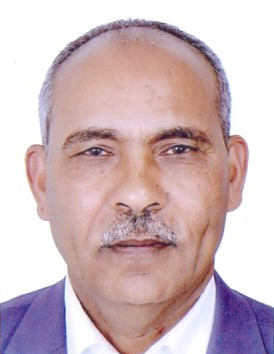Team involved
 |
Name of the project manager : Messaoud Hassani - Professor |
Name of teacher-researchers involved
Grade
Kais Bouzrara
Professor
Tarek Garna
Assistant Master
Anis Khouaja
Assistant Master
Anouar Ben Amor
Assistant Master
Ghabi Jalel
Assistant Master
Saber Maraoui
Assistant Master
Abdelkader Mbarek
Assistant Master
Ines Jaffel
Assistant Master
Chakib Ben Njima
Assistant Master
Walid ben Mabrouk
Assistant Master
Imène Laamiri
Assistant Master
Name of doctoral students to be mobilized within the framework of the project:
|
Syrine Nafeti Khaled Dhibi Saidi Mejda Ben Afia Nesrine Hammami Dine El Houda |
Sawssen Bacha Riheb Bkekri Yousfi Marwa Jouirou Raghada Bousaada Hajer |
Kerkeni Rochdi Benamor Hajer Sondes Gharsallaoui Fatma Hamzaoui |
Monitoring, diagnostics and control of industrial systems are topics of yesterday, today and certainly tomorrow. Indeed, the development of technologies at a sustained pace, the fierce competition between manufacturers to gain market share, which has become globalized, encourage researchers to develop new approaches and / or techniques that would allow better control of these industrial processes, which have become very complex. The identification and control of these systems is part of this research. Starting from the fact that the perfect model does not exist, another level in the automation chain has been introduced. It concerns supervision and surveillance. It is within this framework that the first part of this project fits. In fact in this part one proposes to make modelization and the diagnosis of nonlinear and dynamic systems. These two characteristics are those of real processes, and they further complicate the task of researchers. Several works on the subject have been produced around the world, with more or less relevant advances. It is, in fact, from remarkable signals or indicators, to detect malfunctions and react accordingly, in order to guarantee the integrity of the process. These indicators are developed using kernel methods characterized by their efficiency in terms of generalizability. The interest of this part of the project in relation to the aspect of monitoring, diagnosis and even operational reliability of the processes is obvious.
In recent years, the theory of statistical learning, initiated by Vapnik, has seen increasing interest. These techniques exploit the theory of reproducing nuclei. The main idea is the kernel trick, allowing to transform observation data using non-linear application, in high dimensional space, where linear methods can be applied. In the proliferation of these methods, of which the Support Vector Machines are the spearhead, little work has been carried out on the opposite problem, ie the return to the space of observations. Paradoxically, although the nonlinear transformation induced by the nucleus is fundamental, the inverse return to the space of observations is often crucial. Solving this problem, known as the pre-image problem, allows new fields of application for kernel methods, including pattern recognition, feature extraction, signal denoising, and series analysis. temporal. It is within this framework that the second part of this project is developed. Indeed, the objective is to show that the kernel methods provide relevant solutions to several problems raised in signal and image processing, Different non-linear methods have been developed: the resolution of the pre-image problem under the constraints of non-negativity for pattern recognition, feature extraction and denoising, the autoregressive kernel model for time series prediction, and finally support vector machines for discrimination to improve classification performance.
Another application of kernel methods concerns the control of so-called complex systems based on models delivered by said methods.It would then be interesting to adapt two widely used control strategies, namely predictive control and control by sliding modes and to control them. test on the two real processes acquired by the laboratory. Another application of predictive control based on core methods is to regulate the heating power in smart buildings.
In fact, it is about two teams which work in parallel and which use the same tools, a first team which deals with the aspects of diagnosis and image processing and a second which will be devoted to the synthesis and the application. predictive and sliding control strategies.
- Continue the work started on the diagnosis of complex systems. This involves deepening knowledge on the detection, location and isolation of sensor faults affecting complex systems.
- Establishment of detection and diagnostic models in the medical field (cardiovascular diseases, carcinogens and brain disease) based on the wavelet transform, PCA and KPCA for detection, classification and localization. In fact, heart, carcinogenic and brain diseases are becoming more diverse and numerous every day. Our strategy calls on the one hand on signal processing techniques, the wavelet transform and kernel techniques (KPCA, KPLA, SVM, etc.) to classify and reduce the complexity of signals and images in order to to be able to make a decision.
- State of the art of kernel methods in the context of image processing (pre-image problem)
- State of the art of multi-core methods in the context of image processing
- Proposal of online kernel methods for pattern recognition
- Proposal of multiple kernel methods for pattern recognition
- Proposal of new in-line multiple-kernel methods for image processing
- Comparative study of on-line identification methods based on kernel methods in terms of computation time, convergence time and complexity.
- Adaptation of the MPC predictive control method to the models obtained by the above-mentioned identification methods with choice of predictor and horizons.
- Application of the proposed method to the two real systems existing in the laboratory.
- Application of the proposed method to the regulation of heating systems in smart buildings using the experts resulting from the fusion of data from sensors installed at the building level.
- Adaptation of the sliding mode control method obtained by the above-mentioned identification methods with a study of Cahttering phenomena


